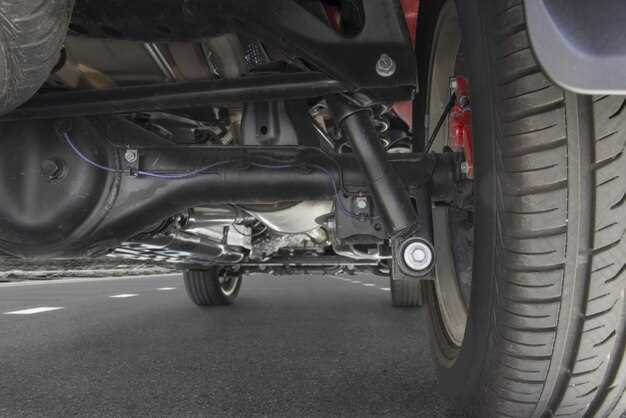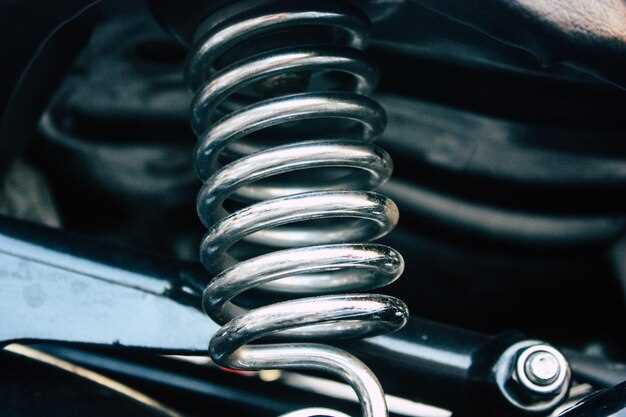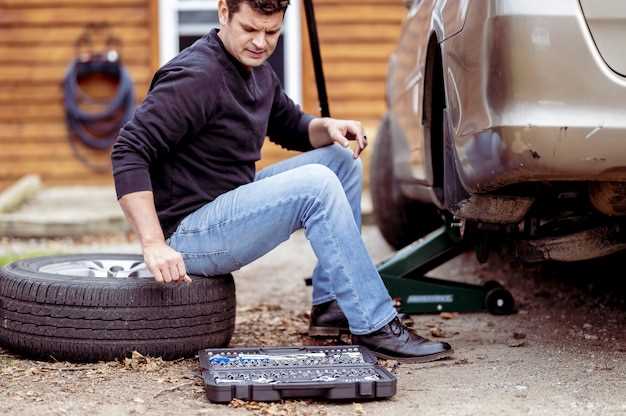
The installation of sway bars on your VW Corrado is an essential upgrade that enhances overall handling and stability. Sway bars, also known as anti-roll bars, play a crucial role in reducing body roll during cornering, thereby improving traction and driver confidence. This guide aims to provide a clear and thorough walkthrough of the installation process, ensuring that both novice and experienced mechanics can achieve optimal results.
Before embarking on this project, it’s important to understand the significance of a sway bar in automotive design. By connecting opposite wheels, sway bars help to balance the weight distribution during turns, thus minimizing the tendency of the car to lean excessively. This upgrade can lead to improved performance on the road or track, enhancing your driving experience with the Corrado.
In this guide, we will cover everything from selecting the right sway bar for your vehicle to the step-by-step installation process. By following our instructions, you’ll be able to install your sway bars with confidence and significantly enhance the dynamics of your VW Corrado.
Selecting the Right Sway Bar for VW Corrado
When it comes to improving the handling of your VW Corrado, choosing the right sway bar is crucial. A sway bar, also known as an anti-roll bar, helps reduce body roll during cornering by distributing weight evenly across the vehicle. Selecting an appropriate sway bar involves considering several factors.
First, assess your driving style and intended use of the Corrado. If you primarily drive on the street, a sway bar with a moderate stiffness might suffice. However, for track enthusiasts or those seeking a sportier feel, a stiffer sway bar can provide enhanced cornering capabilities and responsiveness.
Next, consider the diameter of the sway bar. A larger diameter generally indicates a stiffer bar, which can lead to improved performance. However, it may also result in a harsher ride. Balance is key; the goal is to enhance handling without sacrificing comfort. Look for options specifically designed for the VW Corrado to ensure compatibility and optimal performance.
Additionally, examine the construction material of the sway bar. High-quality materials, such as hollow steel or composite materials, can reduce weight while maintaining strength, providing better performance without adding unnecessary bulk.
Lastly, read reviews and gather information from other VW Corrado owners regarding their experiences with various sway bars. This feedback will help inform your decision and ensure you select a bar that fits your needs and expectations.
Tools Required for Sway Bar Installation

Installing a sway bar on your VW Corrado requires specific tools to ensure a smooth and efficient process. Here’s a comprehensive list of the tools you will need.
First, gather basic hand tools including a ratchet set and various socket sizes. A 13mm and 18mm socket are typically essential for removing and securing the sway bar bolts. A torque wrench is also crucial to ensure that all fasteners are tightened to the manufacturer’s specifications.
Next, you will need a set of wrenches, particularly an adjustable wrench, which can help when dealing with tough-to-reach areas. A breaker bar can provide additional leverage for stubborn bolts that may resist removal.
A drill and drill bits might be necessary if your sway bar requires modifications for proper fitment. Additionally, a wire brush can help clean areas before installation, ensuring a better fit and less corrosion.
Don’t forget safety equipment such as gloves and eye protection to keep yourself safe while working. A jack and jack stands or ramps will provide necessary access to the undercarriage of your vehicle.
Having these tools on hand will enable you to complete the sway bar installation efficiently, improving the handling and stability of your VW Corrado.
Step-by-Step Instructions for Removing the Old Sway Bar

Removing the old sway bar from your VW Corrado is a crucial step before installing a new one. Follow these detailed instructions to ensure a smooth process.
Step 1: Gather Necessary Tools
Before beginning, collect the tools you’ll need: a socket set, wrenches, a jack, jack stands, and possibly a penetrating oil to loosen rusted bolts. Having these ready will help you work efficiently.
Step 2: Lift the Vehicle
Start by safely lifting the front of your VW Corrado using a jack. Secure the vehicle with jack stands to ensure stability while you work underneath.
Step 3: Remove the Wheels
For easier access to the sway bar, take off the front wheels. Use the appropriate socket to loosen and remove the lug nuts, then carefully set the wheels aside.
Step 4: Locate the Sway Bar
With the wheels removed, locate the sway bar running between the left and right control arms. It should be positioned near the center of the vehicle, parallel to the ground.
Step 5: Detach Linkage
Identify the sway bar end links connecting the bar to the control arms. Using a socket or wrench, carefully remove the bolts securing the end links. Keep track of the hardware for reuse in case your new sway bar doesn’t come with new ones.
Step 6: Unbolt the Sway Bar
Next, locate the mounting brackets securing the sway bar to the chassis. Remove the bolts that hold the brackets in place. Depending on the condition of the bar, you may need to apply penetrating oil to ease the removal of stubborn bolts.
Step 7: Remove the Sway Bar
Once the sway bar is completely unbolted, carefully slide it out from its mounts. Due to its size, it might require a bit of maneuvering. Be cautious not to damage any surrounding components during this process.
Step 8: Inspect Components
After removal, take a moment to inspect the sway bar and associated parts for any wear or damage. This includes checking the bushings and end links, which you may also need to replace if they show signs of deterioration.
Following these steps will ensure that the old sway bar is removed properly, setting you up for a successful installation of the new bar to enhance cornering performance on your VW Corrado.
Installing the New Sway Bar: Key Considerations
When installing a new sway bar on your VW Corrado, there are several essential factors to keep in mind to ensure proper setup and performance. The sway bar, also known as an anti-roll bar, plays a crucial role in stabilizing the vehicle during cornering, reducing body roll, and enhancing handling. Here are the key considerations:
| Consideration | Description |
|---|---|
| Compatibility | Ensure that the sway bar is compatible with your specific VW Corrado model and year. Not all sway bars fit every model, so double-check the specifications. |
| Material Quality | Choose a sway bar made from high-quality materials, such as hardened steel or aluminum, to enhance durability and performance. A stronger sway bar will provide better response. |
| Diameter Size | The diameter of the sway bar affects its stiffness. A thicker bar increases stiffness and improves handling but may lead to a harsher ride. Consider your driving style when selecting the diameter. |
| Mounting Points | Inspect the mounting points on your vehicle. Ensure that they are in good condition and free from rust or damage to prevent potential issues during installation. |
| Installation Tools | Gather all necessary tools before beginning the installation. Essential tools include a socket set, wrenches, and possibly a torque wrench to ensure proper tightening of bolts. |
| Professional Help | If you’re not confident in your mechanical skills, consider seeking professional help for the installation. A knowledgeable mechanic can ensure the sway bar is installed correctly. |
| Test Drive | After installation, perform a test drive to evaluate the new sway bar’s impact on handling. Pay attention to any unusual sounds or feelings and adjust if necessary. |
By paying attention to these considerations, you can enhance the performance and handling characteristics of your VW Corrado with the new sway bar installation.
Tuning Your Suspension After Sway Bar Installation
After successfully installing sway bars on your VW Corrado, it’s crucial to fine-tune your suspension setup to maximize performance and enhance cornering capabilities. Proper tuning will ensure that your vehicle handles better and maintains stability through turns, ultimately providing a more enjoyable driving experience.
Firstly, evaluate the stiffness of your sway bars. If you’ve installed a thicker sway bar for improved handling, consider the potential need to adjust the spring rates or dampening settings on your shocks. A stiffer sway bar may lead to increased understeer or oversteer depending on your vehicle’s setup. A balance should be found by either upgrading springs or adjusting shocks to complement the new sway bar’s characteristics.
Next, assess your tire pressures. Increased sway bar stiffness can cause changes in how the vehicle responds to steering inputs, potentially leading to higher cornering loads on your tires. Ensure that your tire pressures are optimized for both daily driving and spirited cornering. Monitor tire wear patterns after adjustments to ensure even contact with the road surface.
Additionally, consider the alignment settings. After sway bar installation, it may be beneficial to fine-tune the alignment angles such as camber, caster, and toe. A slight negative camber can improve cornering grip, while proper toe settings can enhance straight-line stability. Regular checks and adjustments can prevent premature tire wear and maintain optimal handling performance.
Finally, take your Corrado for a test drive on winding roads to assess how the suspension feels. Pay attention to body roll and cornering responsiveness. If the vehicle feels too loose or too rigid, revisit the settings you adjusted. Fine-tuning may involve multiple iterations to achieve the perfect balance that meets your driving style and preferences.
Testing Your VW Corrado’s New Cornering Performance
After successfully installing new sway bars on your VW Corrado, it’s essential to evaluate the changes in cornering performance. This step will help you understand how the modifications affect handling, stability, and overall driving experience. Follow these guidelines for thorough testing:
-
Initial Visual Inspection:
- Check for any visible issues with the sway bar links and mounting points.
- Ensure that all bolts are tightened to the manufacturer’s specifications.
-
Basic Driving Assessment:
- Take a short test drive in a controlled environment, preferably an empty parking lot.
- Evaluate the car’s responsiveness during gentle turns.
-
Cornering Performance Tests:
- Gradually increase the speed while navigating through corners to assess body roll and improved stability.
- Pay attention to your steering feedback; it should feel more direct and precise.
-
High-Speed Cornering:
- Find a safe, open road where you can experiment with higher speeds.
- Observe how the car maintains its composure and traction when cornering at speed.
-
Comfort and Ride Quality:
- Assess any changes in ride comfort; changes in sway bar stiffness can influence this aspect.
- Consider making adjustments based on your personal preference for handling and comfort.
-
Final Analysis:
- Reflect on your driving experience compared to before the sway bar installation.
- Determine if the enhancement in cornering performance aligns with your driving goals.
Through these steps, you can accurately evaluate your VW Corrado’s new cornering capabilities and sway bar effectiveness. Make any necessary adjustments based on your findings to optimize performance further.











